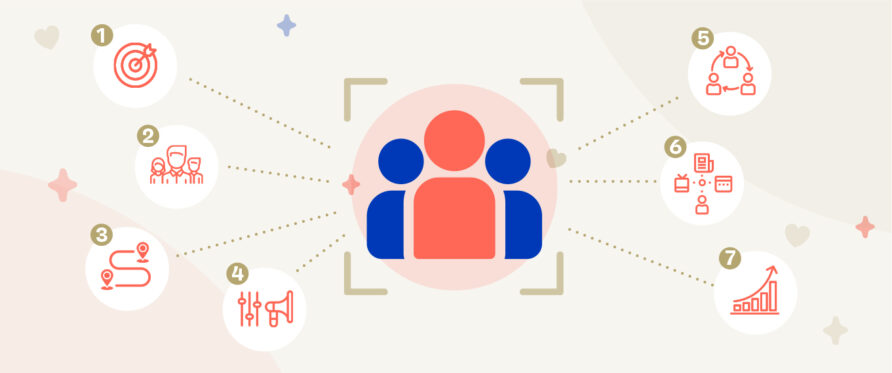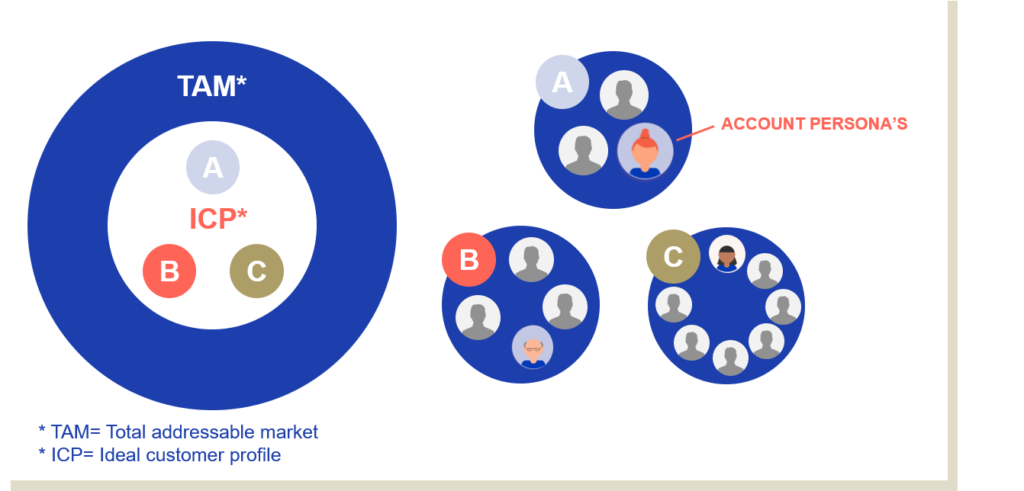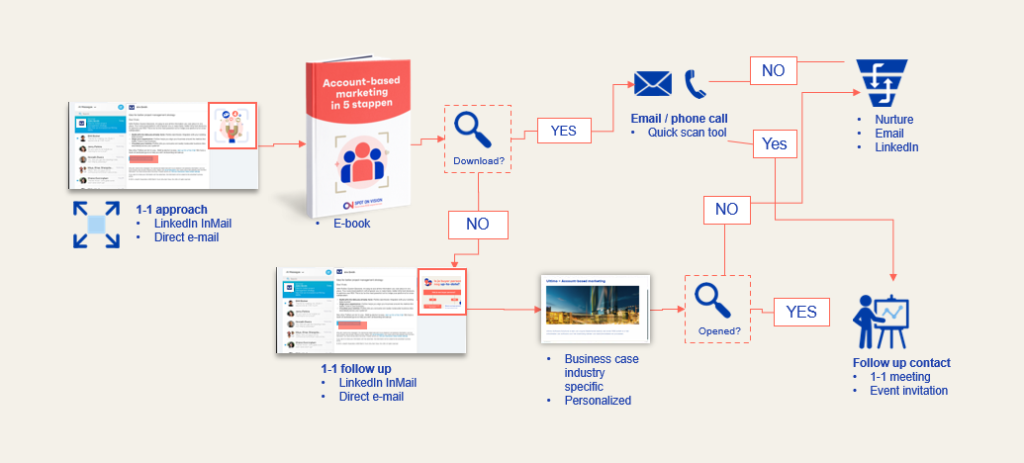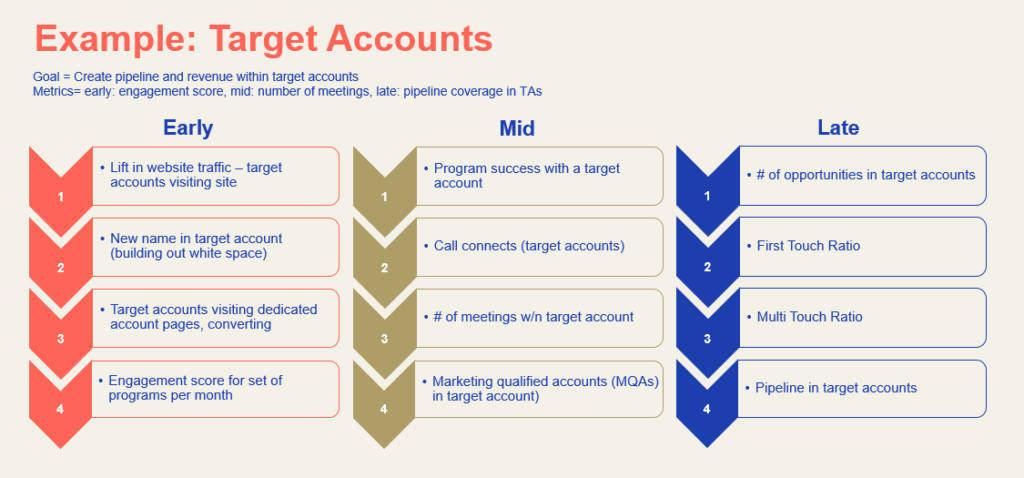The 7 elements of an ABM playbook

The rollout of an account-based marketing programme requires a coordinated and personalized approach from Marketing, Sales and other commercial teams. That’s why we often work with a playbook for account-based marketing. In this article we will discuss what it is, what the benefits are and what the important parts of an ABM playbook are.

What is an ABM playbook?
Originally the term “playbook” comes from sports lingo. It’s a term that is often used in American Football. It’s a document in which the strategy and the different tactics of a team are described.
We also often work with a playbook for the roll-out of account-based marketing programmes. One of the reasons for this is that intensive collaboration between Marketing and Sales is one of the essential conditions for success. Because it’s useful that everyone knows the process and what is expected of him or her.
In an ABM playbook you describe exactly how you can ensure a successful rollout of your ABM programme. Furthermore, it is a guide for how-to-do account-based marketing within your company.
The advantages of an ABM playbook
Keeping track of your account-based marketing approach has a number of advantages:
- Provides insight into the different roles and tasks: everyone knows what is expected of him or her and the timeline of each task.
- Ensures that the rollout of your ABM programme runs smoothly.
- It makes your program scalable: by outlining a clear process it is easier to reproduce.
The seven chapters of an ABM playbook
In an ABM playbook, the account-based marketing approach represents a specific segment or a selected group of accounts. You explain every process step in this process. It serves as a reference and also a guideline for anyone working on the rollout of your ABM activities. The playbook must contain at least the following elements:
1. Background and purpose of the ABM programme
Here you’ll describe how you arrived at this approach, what the goals of the programme are and how these goals relate to the general objectives of the organization.
2. Chosen industries, segments or accounts
With account-based marketing you edit a pre-determined group of companies with tailor-made sales and marketing campaigns. Therefore, it is important that you pay attention to the focus of your campaign in your playbook. You also describe the most important characteristics, triggers and challenges faced in relation to your product or service per account or segment.
Tip: always refer to where relevant background information can be found. For example, studies, annual reports or company videos.

3. The stakeholders, personas and the buying process
You will provide an overview of the stakeholders within your target accounts. Who are the main decision-makers and influencers? And what does their buying process look like? Who do you already know? How is the relationship with them? Who do you want to get to know? In this step, you also share links to relevant background information, such as account plans, buyer persona profiles, etc.

4. Campaign approach
In a playbook, you will describe the way in which you will increase awareness and engagement within the selected segments or at the selected accounts. We all know that “buying” is not a linear process and that therefore the pre-planned contact moments may change during the rollout. Especially if a potential account may have personal and specific content preferences. Nevertheless, it is nice to have a blueprint in advance of which content and activities you have available per phase of the buyer journey.

5. Division of roles: Who does what
Describe the different roles and tasks of the people involved. Think of marketing and sales, but don’t forget about the role of Customer Service and Support. Who does what and when? And how do you ensure that you will safeguard and monitor these activities? Also, discuss how you work together; which meetings are there and how often do you have contact? Try to find fixed times when you share and discuss the status of your ABM programme with each other.
6. Content & channels
In this part of the playbook you provide an overview of the account-based content, assets and events. You also describe which channels you use. Try to make the rollout of your ABM activities as easy as possible for everyone. So also think of sharing example emails, example LinkedIn posts, templates, etc.

7. Measure the impact of your ABM programme
This section is about how you track your results and where you do it. Which metrics do you manage and how do you measure success in your campaign.

Final thoughts
A playbook is therefore a handy and practical document that helps you implement account-based marketing. Don’t make it too complicated, start small, experiment and then build on success. Do you want to know more about account-based marketing? Read more at https://www.spotonvision.com/campagnes/account-based-marketing/. You can of course always contact us for questions or for an informal conversation.
Share this article
Related insights
Grow your B2B Marketing knowledge
Subscribe to keep up with our latest B2B Marketing updates and exclusive events. Straight to your inbox, once a month.



